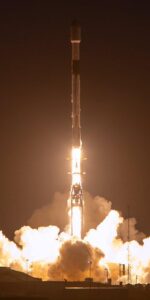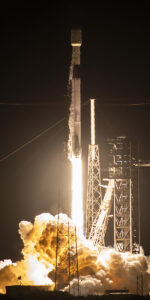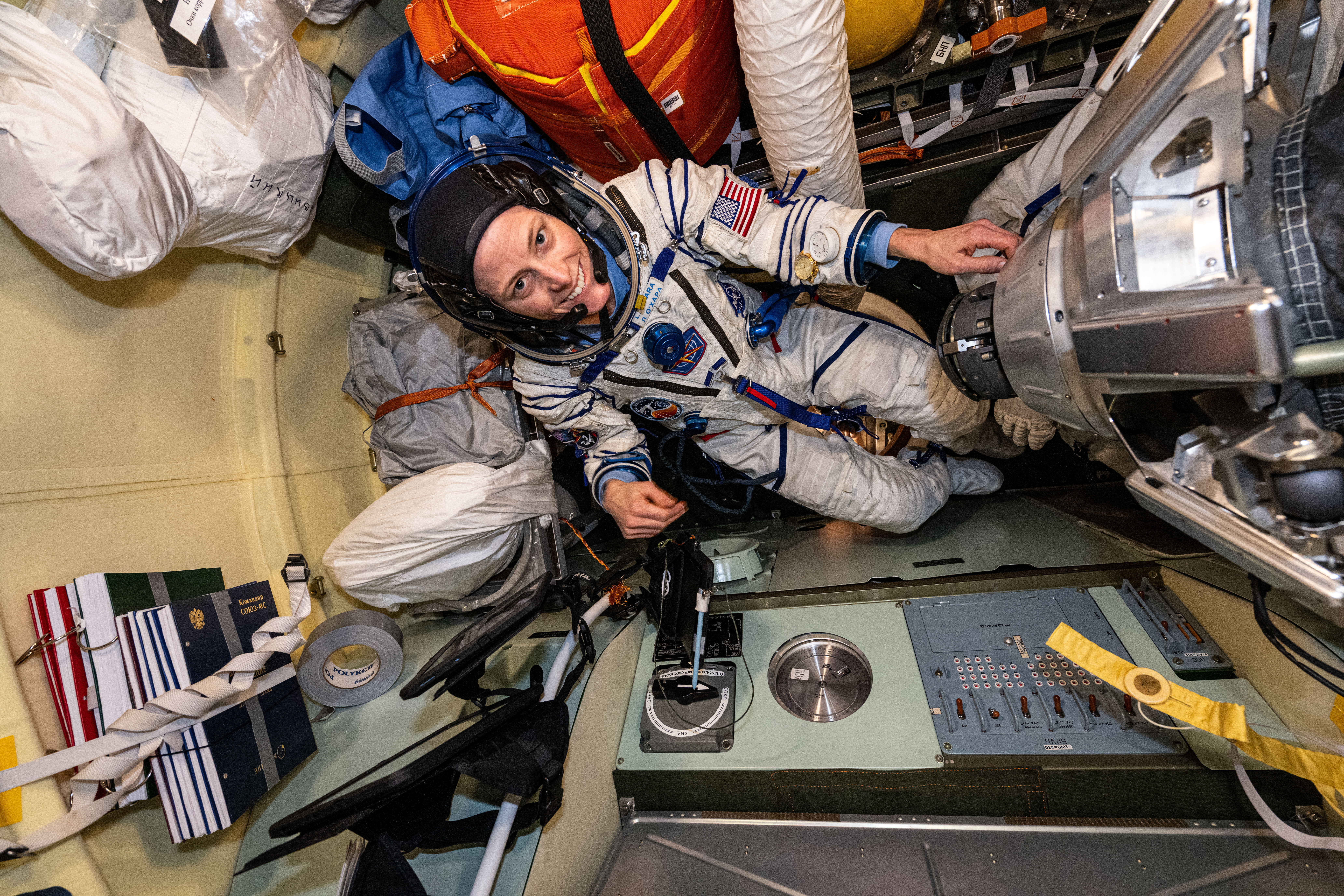
After more than six months aboard the International Space Station (ISS), NASA’s Loral O’Hara will return to Earth early Saturday, parachuting to a Kazakhstan landing shoulder-to-shoulder with Russian cosmonaut Oleg Novitsky and the first Belarusian national space traveler, Marina Vasilevskaya, on the Soyuz MS-24 spacecraft. O’Hara concludes a mission of almost 204 days in space, 3,264 orbits completed and 86.5 million miles (140 million kilometers) flown and will position herself as the 11th most flight-seasoned female spacefarer and wrap up the fourth-longest space voyage ever undertaken by a woman.
Novitsky and Vasilevskaya will wrap up almost 14 days in orbit, having launched from Site 31/6 at Kazakhstan’s Baikonur Cosmodrome on 23 March aboard Soyuz MS-25 with NASA astronaut Tracy Dyson. It is expected that Dyson will fold into the current Expedition 70 and upcoming Expedition 71 increments and will herself return to Earth with Russian cosmonauts Oleg Kononenko and Nikolai Chub in late September.
Current plans call for Soyuz MS-24 to undock from the station’s Earth-facing (or “nadir”) Rassvet module—a berth the spacecraft has occupied continuously since its arrival last September—at 11:55 p.m. EDT Friday, before executing a de-orbit “burn” and separation of its orbital and instrument modules at 2:24 a.m. EDT Saturday that will commit the bell-shaped descent module carrying Novitsky, Vasilevskaya and O’Hara to a fiery descent into Earth’s atmosphere. The spacecraft is scheduled to land under its single main parachute on the steppe of Kazakhstan, southeast of the mining city of Jezkazgan, at 12:18 p.m. local time (3:18 a.m. EDT) Saturday.
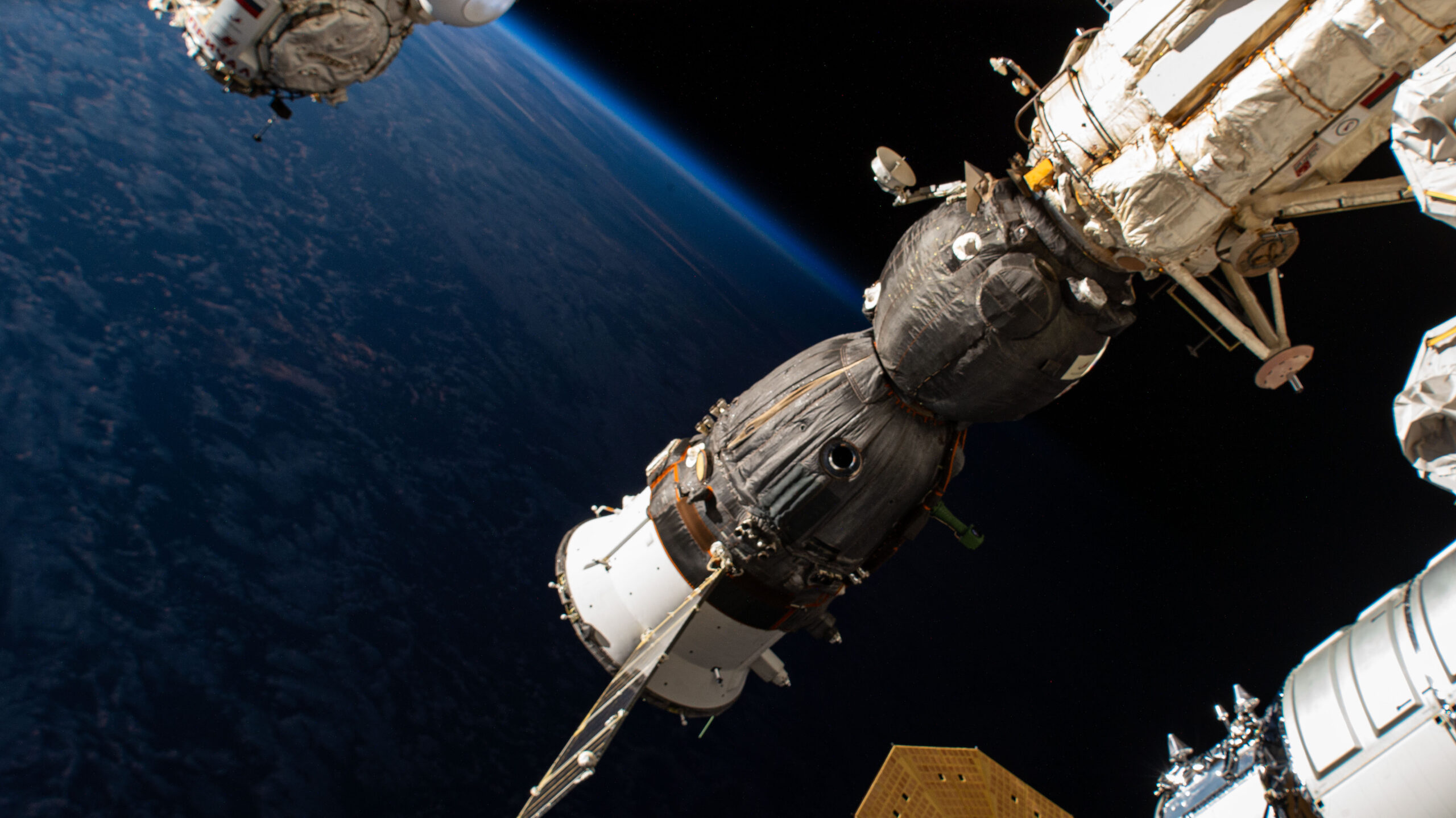
An on-time landing will see O’Hara back on terra firma after 203 days, 15 hours and 34 minutes, slightly pipping fellow NASA astronaut Anne McClain to enter 11th place on the list of most flight-experienced female spacefarers. She will also complete the fourth-longest single space mission ever undertaken by a woman, sitting behind Jessica Meir, former NASA Chief Astronaut Peggy Whitson and the incumbent holder of the record for the longest continuous female spaceflight, Christina Koch.
Born in Houston, Texas, O’Hara earned a bachelor’s degree in aerospace engineering from the University of Kansas and a master’s credential in aeronautics and astronautics from Purdue, also participating—while still an undergraduate—in NASA’s KC-135 Reduced Gravity Student Flight Opportunities Program at the Goddard Space Flight Center (GSFC) in Greenbelt, Md. After graduation, she worked as a research engineer at the Woods Hole Oceanographic Institution in Woods Hole, Mass., prior to being selected into NASA’s Astronaut Corps in June 2017.
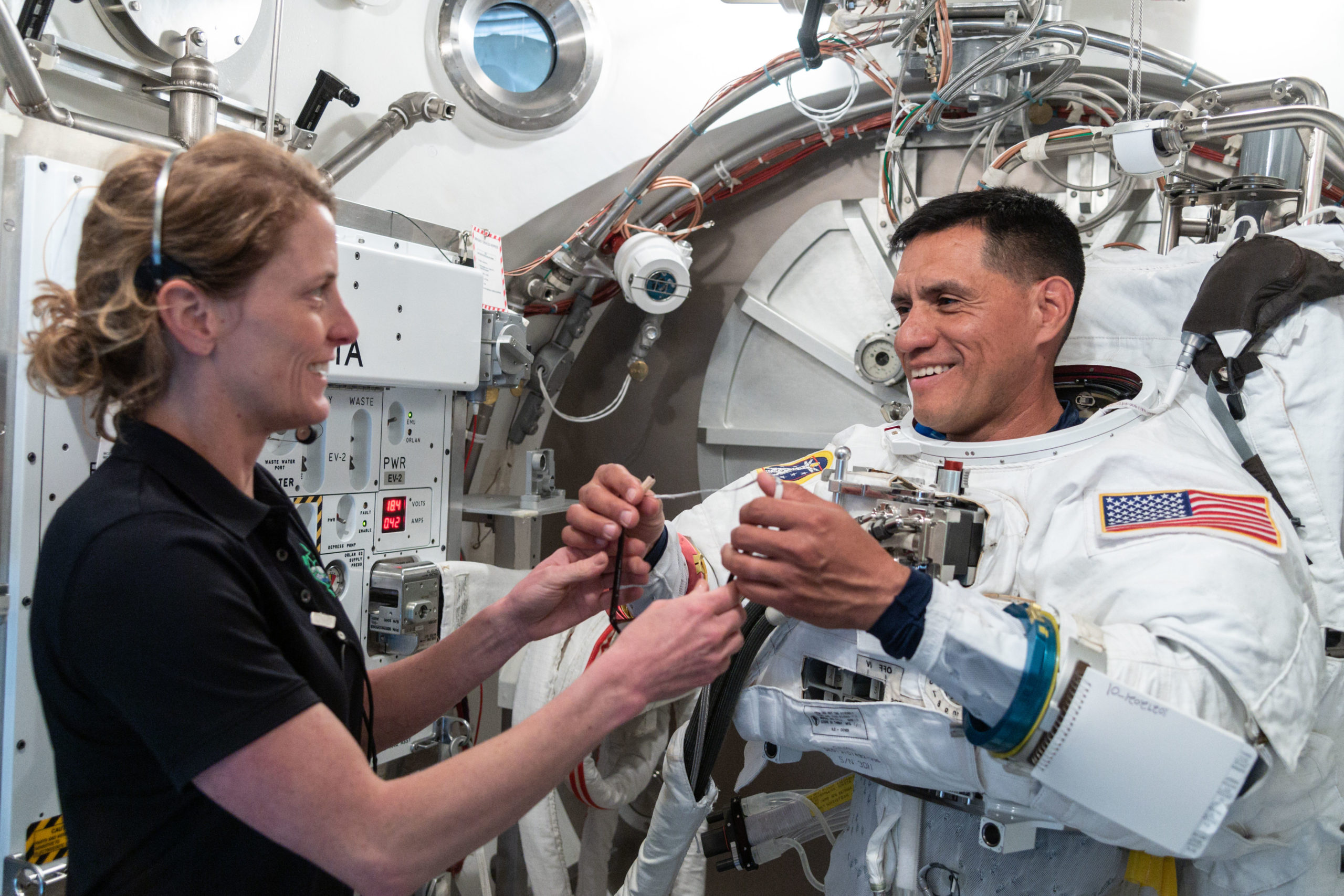
Initially assigned to launch with Kononenko and Chub on Soyuz MS-23 in March of last year, O’Hara found her first space mission shifted one flight to the right after the discovery of a leak in the on-orbit Soyuz MS-22 in December 2022. That finding prompted a decision by Roscosmos and NASA to fly MS-23 in an uncrewed capacity to furnish return surety for Russian cosmonauts Sergei Prokopyev and Dmitri Petelin and U.S. astronaut Frank Rubio. As such, all subsequent crews moved one mission to the right and Kononenko, Chub and O’Hara got reassigned to Soyuz MS-24.
The trio rose from Baikonur’s Site 31/6 atop a Soyuz-2.1a booster at 8:44 p.m. local time (11:44 a.m. EDT) last 15 September and successfully docked at the sprawling orbital complex at 2:53 p.m. EDT after an “ultra-fast” rendezvous regime lasting only three hours and two Earth orbits. At the instant of docking, the ISS was flying some 260 miles (420 kilometers) over Ukraine.
Following pressurization and leak checks, hatches into the station opened and Kononenko, Chub and O’Hara were welcomed aboard by Expedition 69 Commander Sergei Prokopyev, his Russian crewmates Dmitri Petelin and Konstantin Borisov, Denmark’s Andreas Mogensen of the European Space Agency (ESA), NASA astronauts Frank Rubio and Jasmin Moghbeli and Satoshi Furukawa of the Japan Aerospace Exploration Agency (JAXA). But their time together as a ten-member crew was short, for on 27 September Prokopyev, Petelin and Rubio returned to Earth—after 371 continuous days in orbit—and ISS operations transitioned to Expedition 70, under Mogensen’s command.
It marked the start of a busy increment, characterized by the arrival of five and the departure of four uncrewed cargo vehicles between November and March. Two SpaceX Cargo Dragons launched last November and earlier this month, together with a pair of Russian Progress freighters in December and February and Northrop Grumman Corp.’s latest Cygnus supply ship (NG-20) in January.
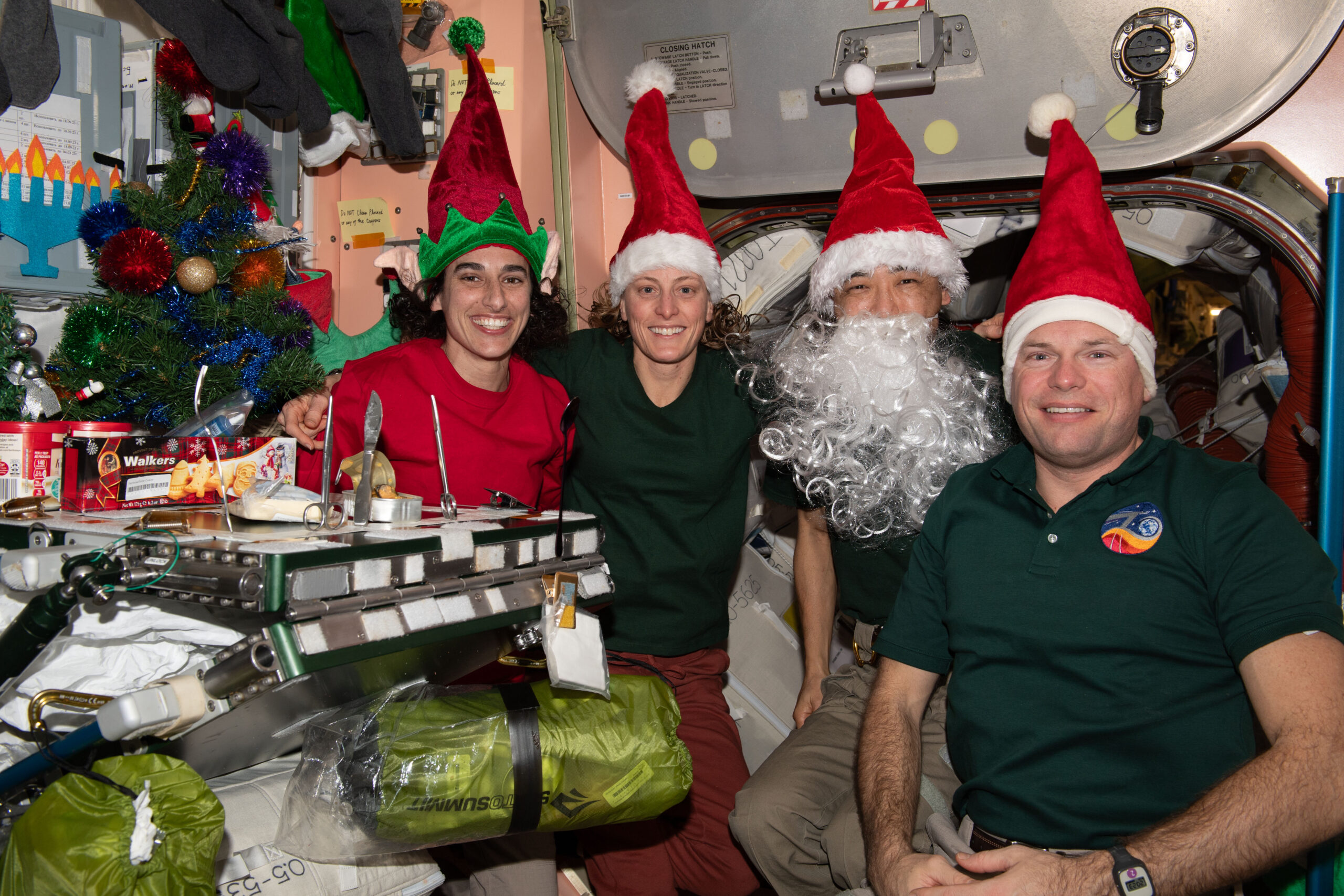
And two other Progresses departed in November and February, whilst Northrop Grumman’s NG-19 Cygnus and SpaceX’s CRS-29 left the station to conclude their own research-heavy missions in the final days prior to Christmas. Notably, O’Hara played a key role in the arrival and departure of each U.S. commercial cargo vehicle, including commanding the 57.7-foot-long (17.6-meter) Canadarm2 robotic manipulator to grapple NG-19 for unberthing last December and capture NG-20 for berthing in early February.
Those pre-Christmas cargo ship departures also afforded the Expedition 70 crew a three-day period of celebratory down time, during which O’Hara and Moghbeli decorated the station’s Harmony node and hung stockings. “Christmas Day was peaceful,” O’Hara tweeted. “A quiet morning of breakfast and some music by the tree to start, Christmas cookie decorating and a big midday feast later.”
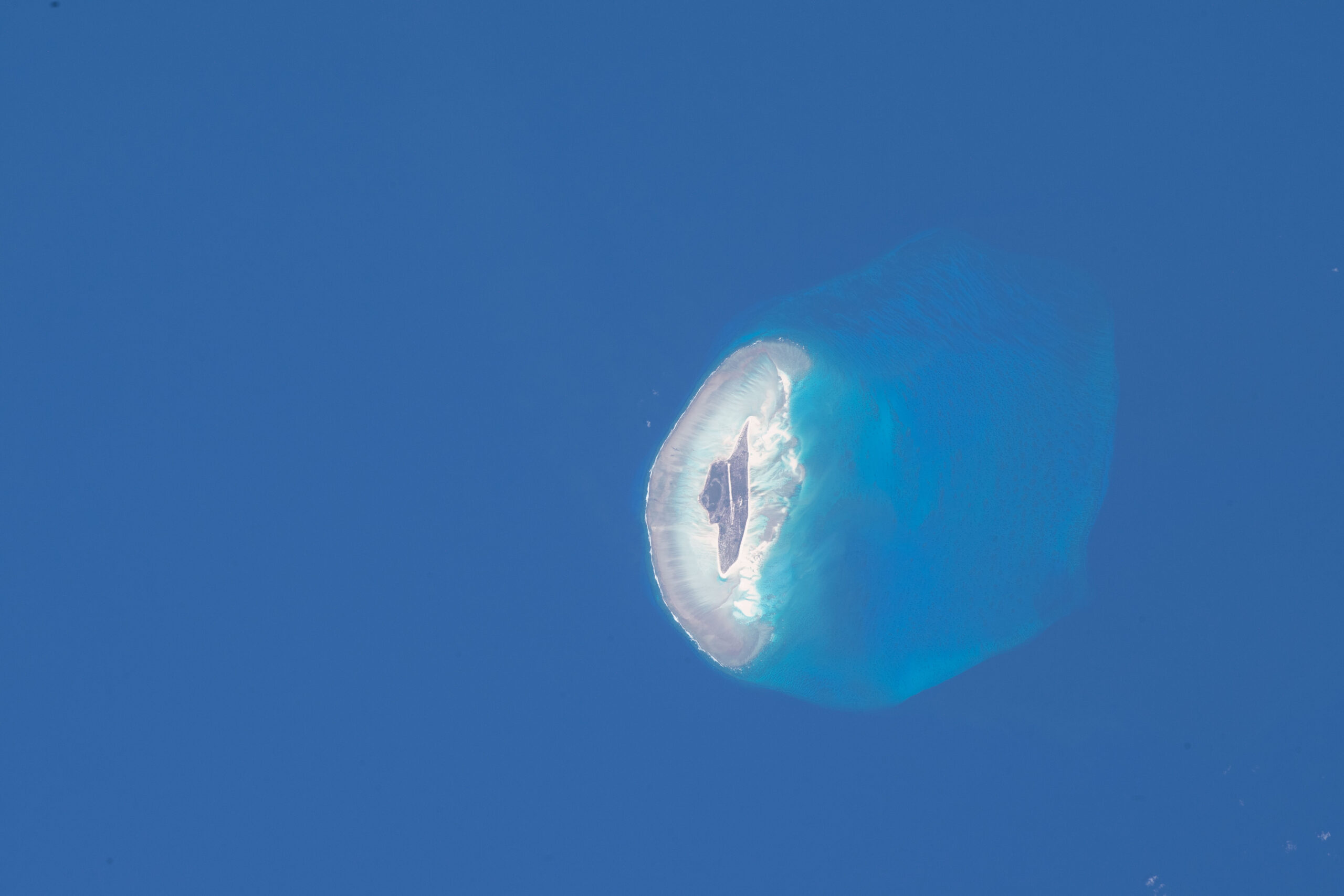
Despite the hectic workload, watching and photographing the Home Planet from the space station’s windows—the Coipasa Salt Pan and Wila Pukarani volcano in Bolivia, northeastern India’s fabled Brahmaputra River, the colossal ship “graveyard” of Nouadhibou in Mauritania, the “Alpenglow” of the Hindu Kush range in Central Asia, snow and ice encircling Canada’s Akimiski Island and the jellyfish-like island of Juan de Nova in the Mozambique Channel—never proved tiresome or lost its luster.
“I love geography and maps and one of my favorite things about living on @Space_Station for six months has been getting to spot something interesting on Earth and then go look up it up on the map,” O’Hara tweeted back in February. “Months in, I find it so satisfying to be able to glance out the window and know instantly what part of the world we are flying over—to feel that sense of familiarity with the planet.”
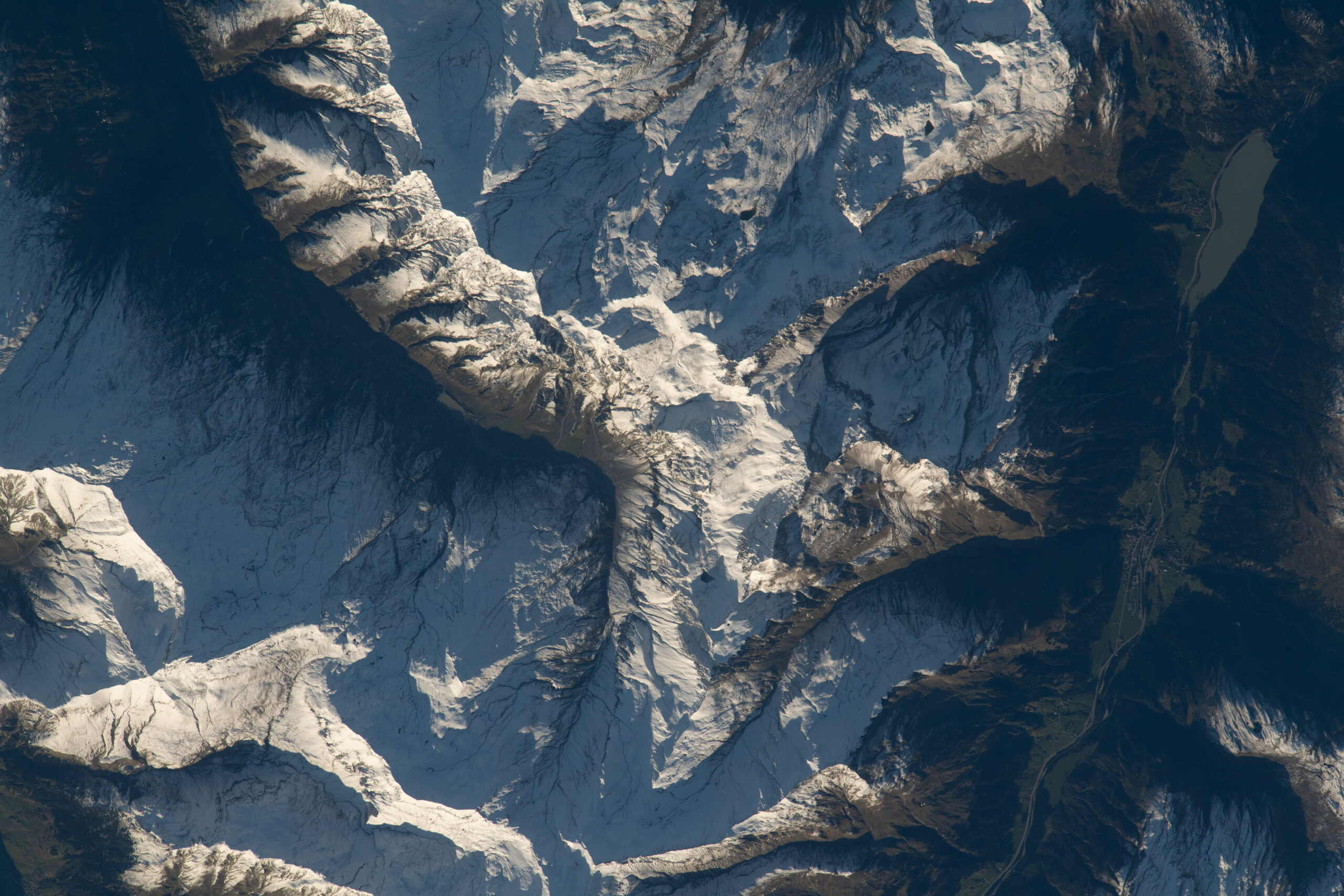
Original plans for Expedition 70 called for two U.S. sessions of Extravehicular Activity (EVA) on 12 and 20 October, the first by O’Hara and Mogensen to retrieve microbial specimens and replace a high-definition external camera and the second by Moghbeli and O’Hara to remove a faulty Radio Frequency Group (RFG) electronics box from a communications antenna bracket and replace one of 12 Trundle Bearing Assemblies (TBAs) on the station’s port-side Solar Alpha Rotary Joint (SARJ).
Unfortunately, on 9 October flakes of debris were observed emanating from one of two radiators on Russia’s Nauka (“Science”) lab, indicative of a coolant leak. Although the leak ceased within a couple of days, NASA elected to postpone both EVAs until no sooner than 19 and 30 October, pending a review of data and video associated with the incident.
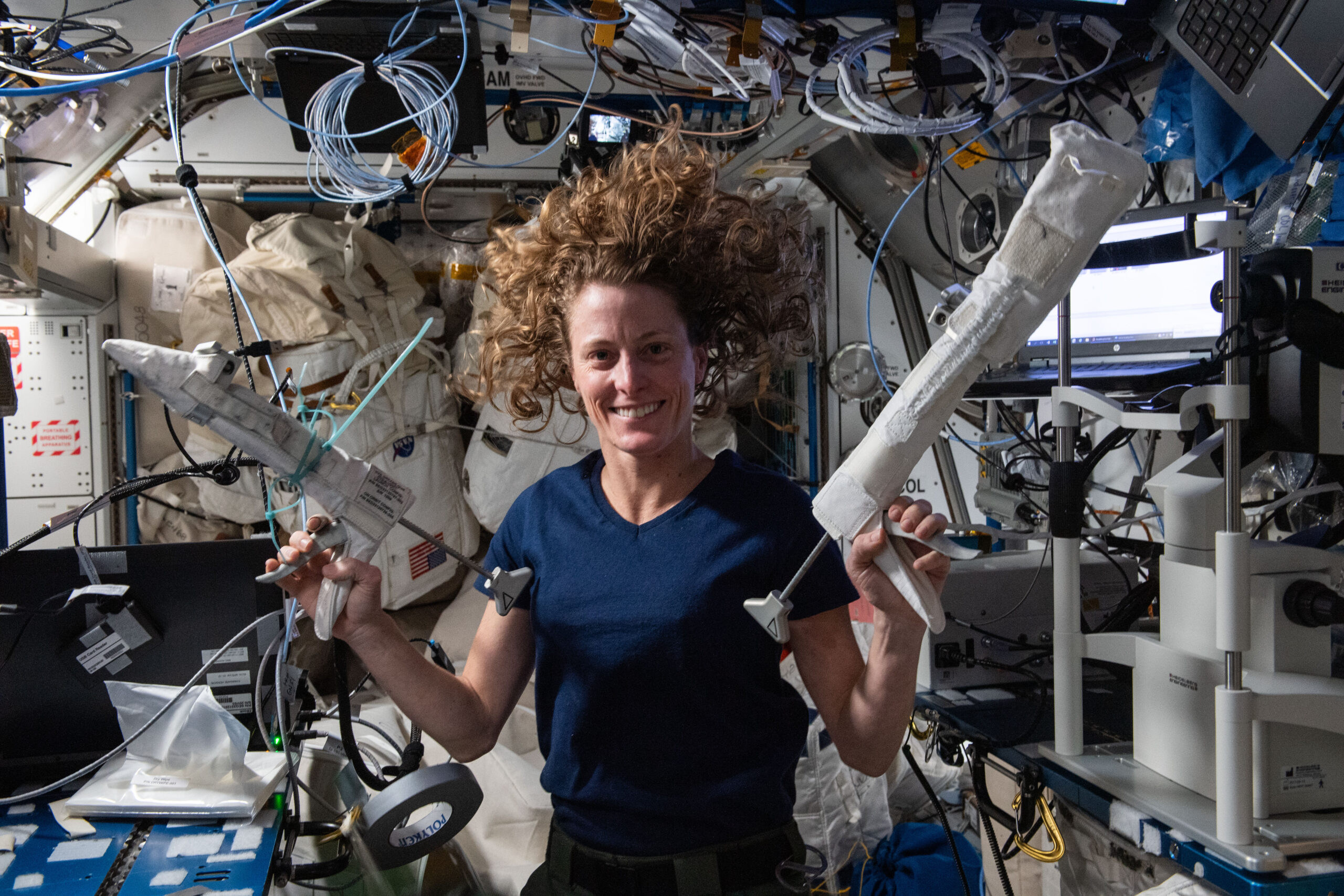
In the meantime, on 16 October the first of the two spacewalks, by O’Hara and Mogensen, was postponed until December and eventually into 2024, with NASA officials noting that its tasks were not time-critical. The second spacewalk, by Moghbeli and O’Hara, was correspondingly moved to 1 November to permit additional preparation time.
By this stage, Kononenko and Chub performed a Russian EVA on 25 October, during which they spent seven hours and 41 minutes outside the ISS inspecting and photographing the troubled radiator, deploying a tiny nanosatellite and installing a synthetic radar communications system, one of whose panels could not be fully unfurled. For their part, Moghbeli and O’Hara—both making the first EVAs of their respective careers—logged six hours and 42 minutes in the vacuum of space.
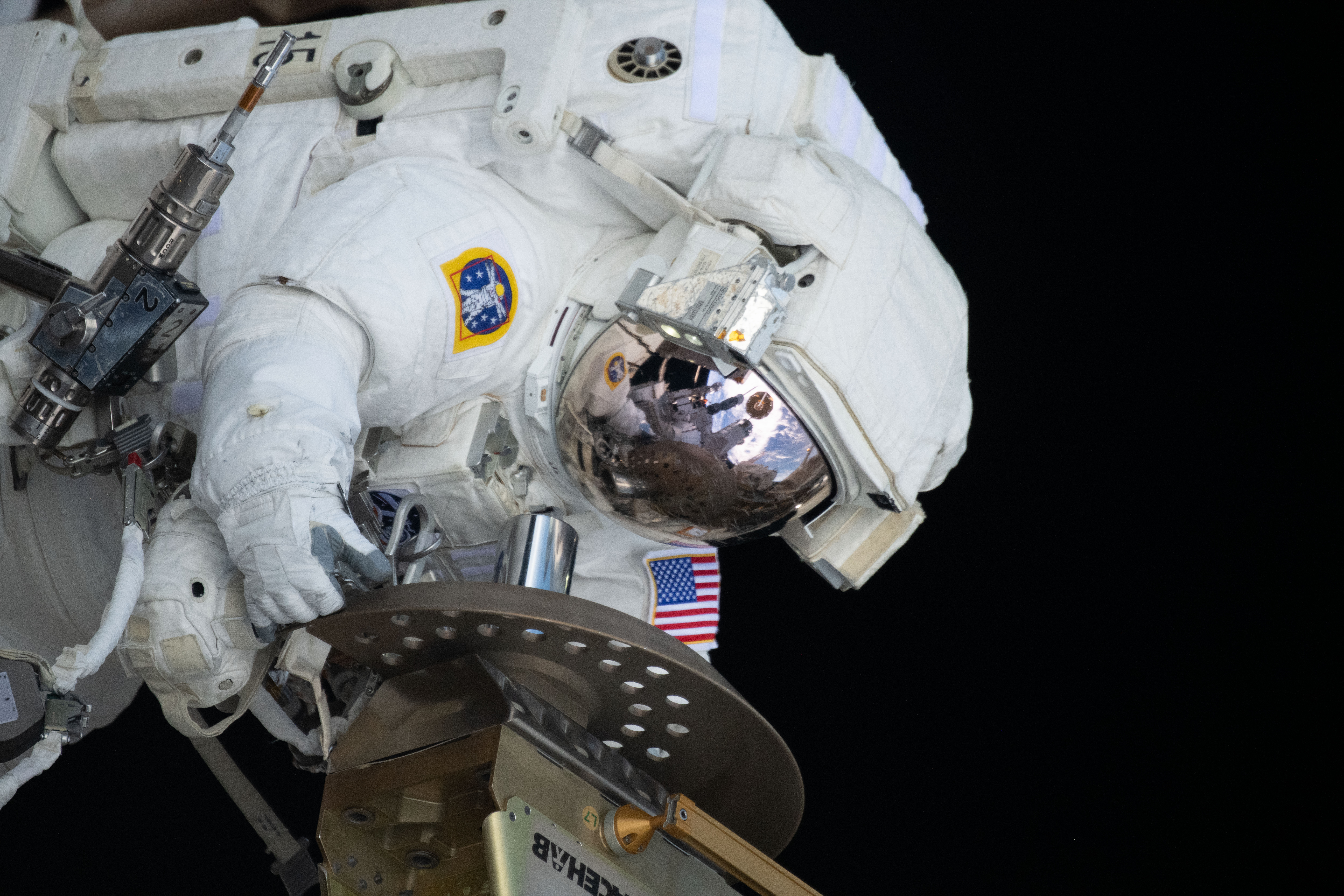
Theirs was only the fourth all-female spacewalk in history, following three prior EVAs by Expedition 61’s Christina Koch and Jessica Meir between October 2019 and January 2020. During their time outside, Moghbeli and O’Hara completed their primary objectives but ran out of time to complete the RFG task, which has been deferred to Expedition 71.
And in January, Dragon Freedom ferried Ax-3 crewmen Mike Lopez-Alegria, Walter Villadei, Marcus Wandt and Alper Gezeravcı—the first national space traveler of Türkiye—to the ISS for what turned out to be an almost three-week mission emphasizing science, technology and educational outreach. With U.S., Russian, Danish, Japanese, Italian, Swedish and Turkish crewmembers (and Lopez-Alegria of dual U.S./Spanish heritage), Ax-3 saw Expedition 70 temporarily boosted to eight nationalities.
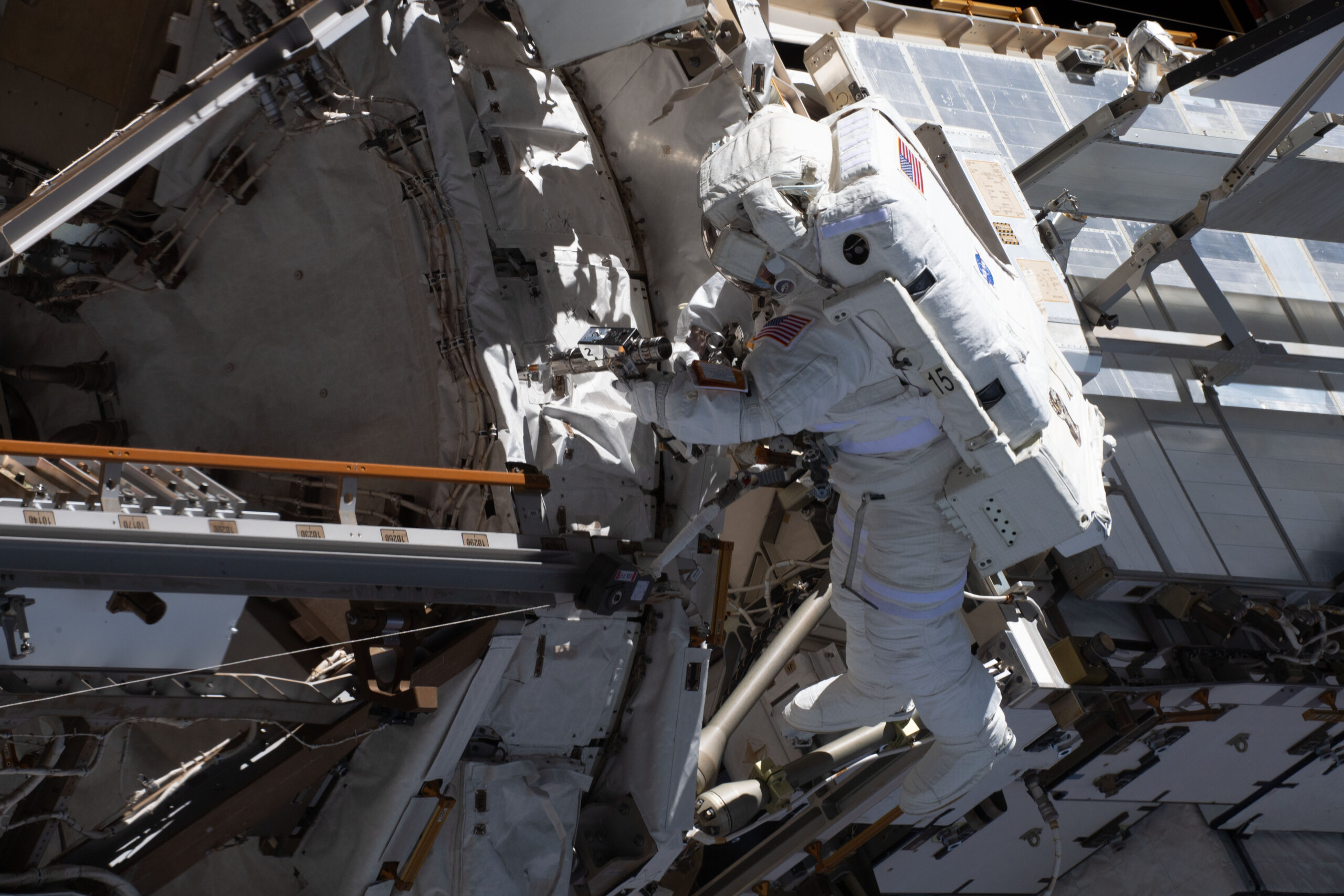
Last month, Dragon Endeavour roared uphill carrying the Crew-8 quartet of NASA astronauts Matt Dominick, Mike Barratt and Jeanette Epps, plus Russian cosmonaut Aleksandr Grebenkin, who will remain aboard the space station until August. The newcomers’ arrival facilitated the departure of Dragon Endurance and Crew-7’s Moghbeli, Mogensen, Furukawa and Borisov after 199 days in space as command moved to Kononenko, who would lead the station through the final weeks of Expedition 70 and the entirety of Expedition 71 before he returns to Earth in late September.
For his part, in February Kononenko passed fellow Russian cosmonaut Gennadi Padalka’s empirical record of 878 career days in space and is set to become the first human to log more than 1,000 days away from Planet Earth in early June. By the time he returns home this fall, Kononenko will pass a career total of 1,100 days—equivalent to three years of his life—across five long-duration ISS missions since April 2008.
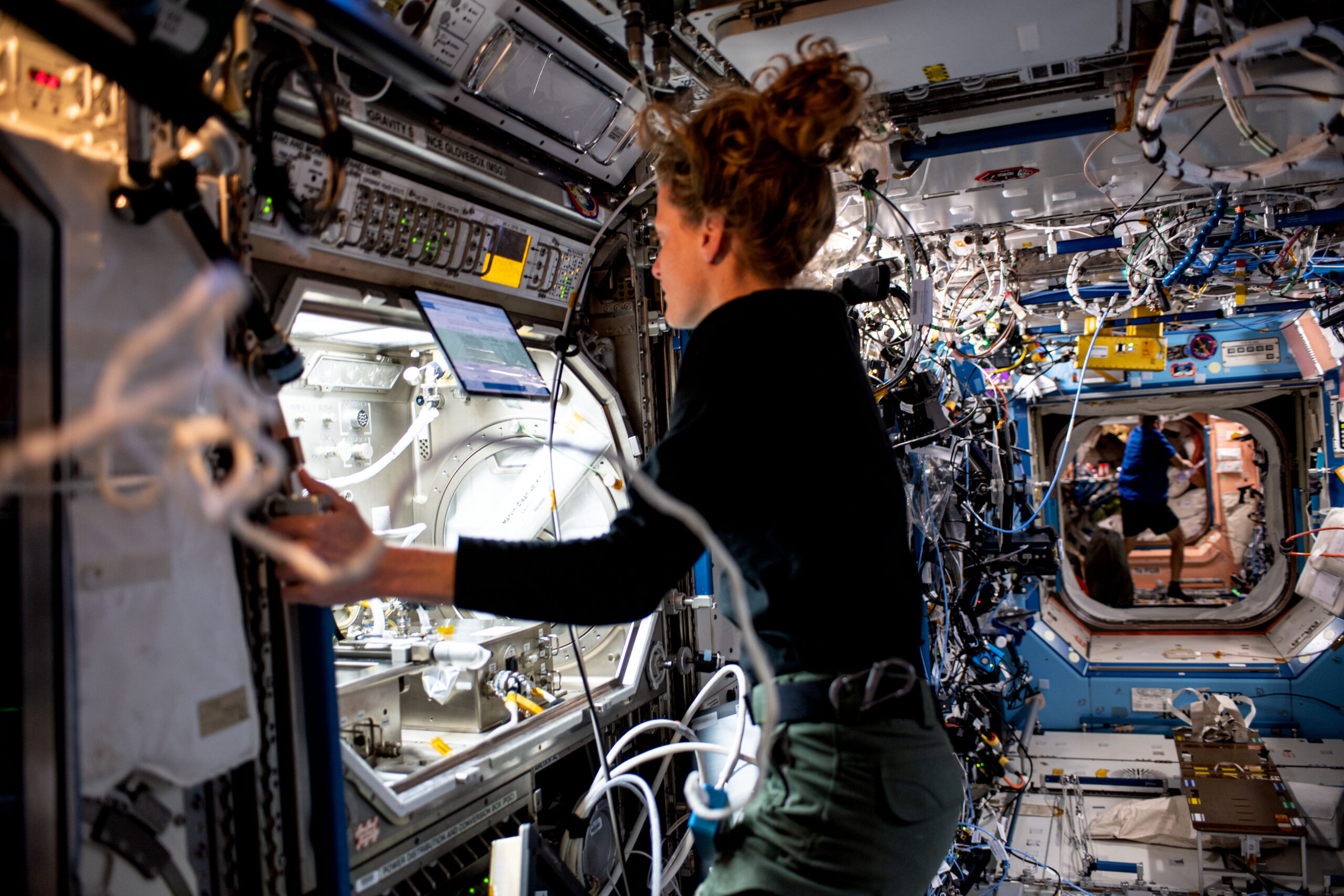
Aside from the drama of crew and cargo arrivals and departures, and EVAs, the ISS proved a powerhouse of science and technology during O’Hara’s increment. Research emphases ran the gamut from cardiac activity and blood pressure measurements to plasma physics, from eye health to observations of accelerated aging-like symptoms in human arteries and from quantum physics research to the observation of thunderstorms and electrical discharges high in the atmosphere.
Notably, O’Hara was one of the first astronauts to participate in the Complement of Integrated Protocols for Human Exploration Research on Varying Mission Durations (CIPHER), one of whose focuses measured changes in cardiorespiratory and muscle fitness during exercise as part of an overall thrust to better protect crew members on deep-space missions. She worked on the growth of tomato plants via the Plant Habitat-6 investigation—by her own admission getting “a little teary” at seeing her first plants in several months—and was a subject in the Microgravity Associated Bone Loss (MABL)-A study into the effects of weightlessness upon bone marrow mesenchymal stem cells.
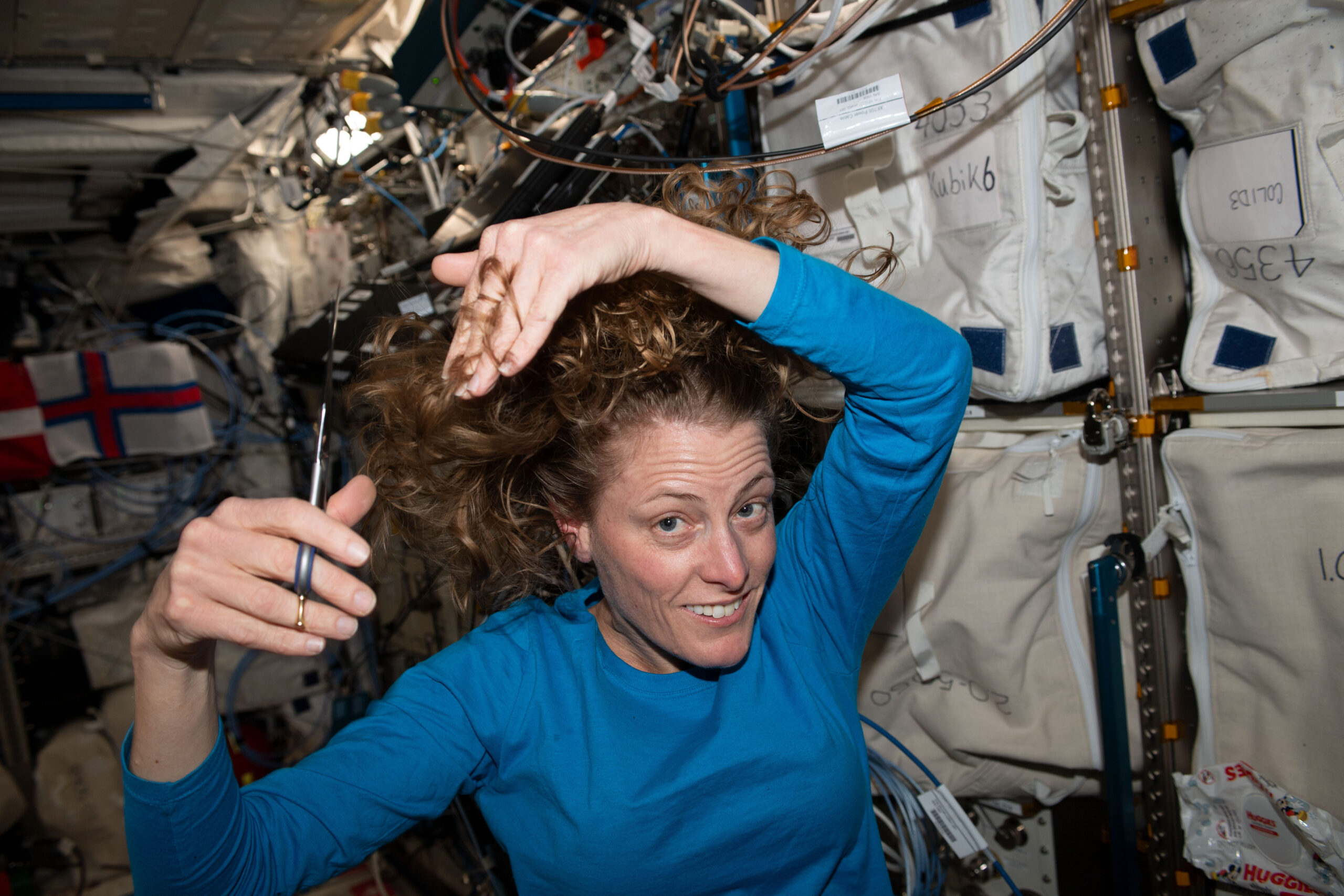
There was time for fun, too. “A few favorite food-related moments,” O’Hara tweeted last month, sharing several images of Expedition 70’s culinary fayre. “Fresh fruits and veggies from our visiting cargo vehicles, evening ice cream with the crew, some of my favorite ISS dishes (fish with mango salsa, creamed spinach, butternut squash), eating nori seaweed sheets…and space cake.”
Other on-orbit chores required more delicate skills. “I gave myself a haircut last weekend, which involves me randomly snipping off ends into the vacuum cleaner nozzle until the job seems complete,” O’Hara related in late January. “Going for the dandelion puffball look. A little concerned, but mostly curious as to what it will look like once I’m back on the ground and gravity takes over again.”
She’ll soon find out.




